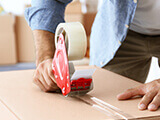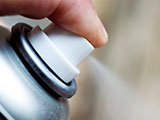
What are different types of ants and what do they eat
Over 12,000 species of ants have been identified, however only a small handful are a threat to your home. Getting rid of ants starts by understanding their behavior and their feeding habits.
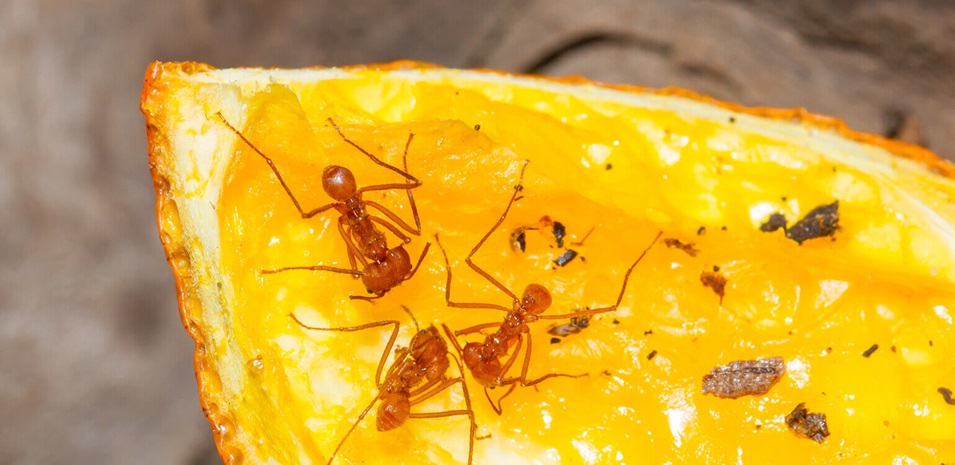
Ants are social creatures by nature. That means when one invades your space, other ants are bound to follow. But with a combination of ant control products and prevention tips, you can fight back and help protect your family from these uninvited guests.
Helping You Get Tough with Ants
With 60 years of experience researching ants in our entomology lab, we’re here to help you understand what type of ant you’re dealing with, so you know where they’re coming from, what they’re eating, where they’re nesting, and most importantly—how to help get rid of them for good.
Understanding Ants

You may know ants in and around your home by many names, including black ants, army ants, sugar ants, flying ants, and more. Because there are so many types of ants, a professional may be needed to identify the exact species. Some experts classify them based on their behavior, dietary needs, and nesting location. Ants found in and around the home can be categorized behaviorally into two main groups: nuisance ants and mound-building ants.
Nuisance ants often form trails to and from food or water. If you are trying to treat these particular ants, it’s important to destroy their trail as well as the nest, which is often found outdoors.
Although mound-building ants can invade your home, they mostly live outdoors and their nests can be unsightly to your landscaping.
In addition, there are two types of ants that are unique enough to get their own categories: carpenter ants and fire ants.
Distinguishing Features to Identify Ants
Ants come in all sizes and colors. They look like a wingless wasp, but very few have stingers, with the exception of the fire ant. If you look closely at the body of an ant, you will also see one or two humps on the slim area between the last two segments. Also, the antennae of ants are kinked or “elbowed.”
Meet the Ants
Nuisance Ants
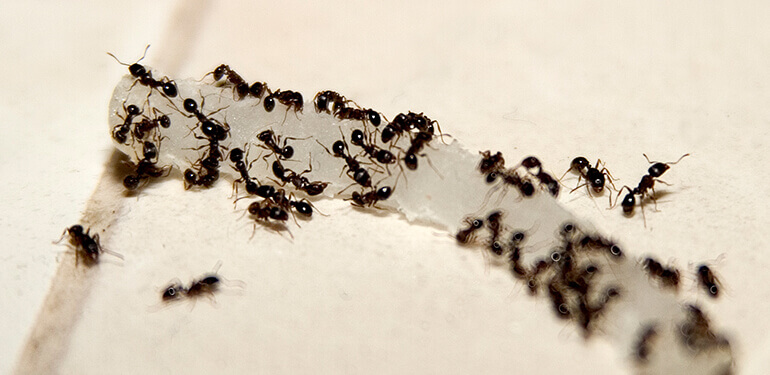
Nuisance ants nest indoors or outdoors. Often their colonies are built close to the home and are hidden in the soil, under objects on the ground, or in the home itself. When they come inside, you can usually spot them following an “invisible trail” towards a source of food or water. These ants can infest and contaminate your food; therefore, it is important not just to eliminate the ants but their trail as well.
Mound-building Ants

Mound-building ants that you see outside may also come inside in search of food and water. These ants build mounds in lawns, mulch areas, and along sidewalks, patios, decks, and the foundation. Outdoor treatmentsare key for controlling mound-building ants.
Carpenter Ants
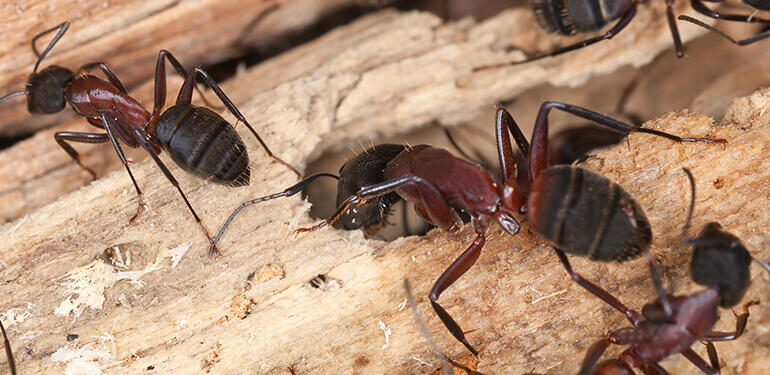
Carpenter ants nest in walls, attics, and water-damaged or rotting wood. Common outdoor nests are found in sheds, firewood, decks, tree trunks, gutters, and soffits. They don’t eat wood, but they do nest and tunnel in wood, which leads to more decay. Carpenter ants may bite if you try to pick them up, but their bites are not as painful as the sting of the fire ant.
How to Help Control Carpenter Ants
Contrary to popular belief, carpenter ants don’t eat wood; they just burrow in it! They actually eat a variety of honeydew, sweets, meats, other insects, and fats. Removing dead or dying trees near the home and repairing water-damaged wood can help prevent carpenter ants from nesting there.
Fire Ants
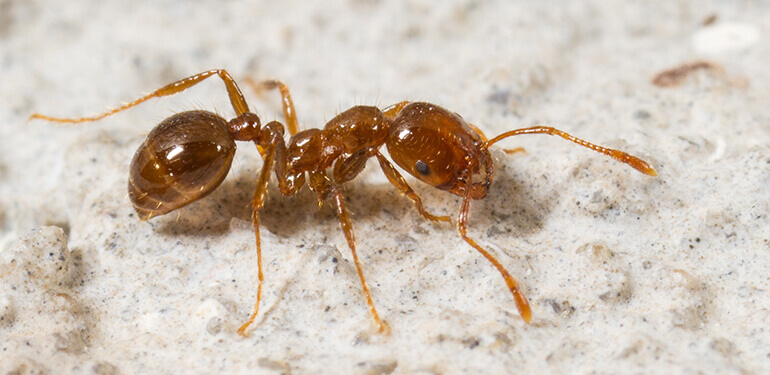
Fire ants generally nest outdoors and can be recognized by their distinctive mounds. They bite, but they also have a stinger on their abdomen that they use to inject venom into anything that disturbs them or their nest. Their stings can be quite painful and multiple stings may require medical attention.
How long do ants live?
The average life expectancy of an ant is only a few weeks. But the colony itself will live for years. That’s why it’s necessary to get tough when battling them.
What do ants eat?
Ants, they’re just like us and they like to eat a lot of foods that we do: potato chips, bread, jelly, and sugar. They may also eat other insects. Anything you can do to remove exposed human and pet food, clean up spills, and seal or take out the trash can help prevent your home from becoming an ant buffet!
Remove accidental ant food
Pet Food is Ant Food
Because ants will feast on pet food, it’s important to keep kibble in pet dishes only when pets are feeding on it. If that’s not realistic, try placing pet food bowls in a slightly larger bowl that has been filled with water. By doing so, you’ll create a moat that ants can’t easily cross.
Blaze their trail
When one ant finds food or water, it will lay down a chemical trail that guides other worker ants to the source—you will see trails of ants going back and forth from the food or water.

